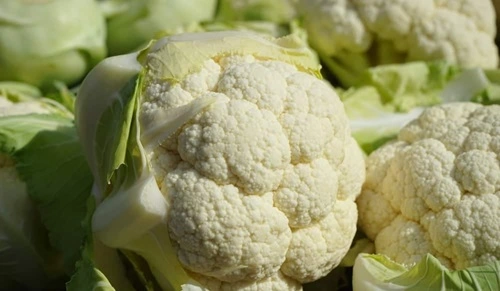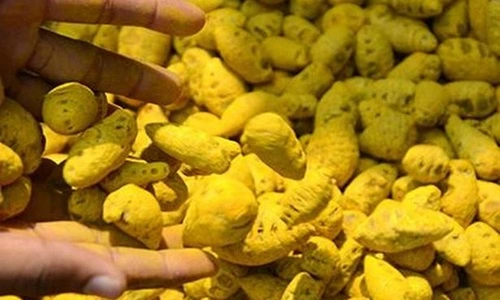Cauliflower is one of the most widely cultivated and consumed vegetables in India. Known for its nutritional value, cauliflower is rich in vitamin C, dietary fiber, antioxidants, and essential minerals, making it a staple in Indian households. It thrives in cool and moderate climates, making it suitable for cultivation during winter and transitional seasons in most parts of India.
Cauliflower is grown across India in various seasons: early season, mid-season, and late season, with each requiring varieties that are suited to their growing conditions. Indian farmers rely on specific cauliflower varieties to maximize yield, adaptability, disease resistance, and market value.
This article highlights the top cauliflower varieties in India, their growing regions, characteristics, and suitability for different climates.

1. Pusa Early Synthetic
Pusa Early Synthetic is a popular early-season cauliflower variety developed by IARI (Indian Agricultural Research Institute). It is ideal for cultivation in North India.
- Harvesting Time: 60–70 days after transplanting
- Curd Color: White
- Curd Shape: Compact, medium-sized
- Regions: Punjab, Haryana, Uttar Pradesh, Delhi
- Characteristics:
- Early maturity
- Compact curds with good yield
- Tolerant to moderate temperature variations
- Uses: Fresh consumption, culinary preparations
2. Pusa Snowball
Pusa Snowball is a mid-season variety known for its snow-white curds and high market preference. It is widely grown across North and Central India.
- Harvesting Time: 90–100 days after transplanting
- Curd Color: Snow-white
- Curd Shape: Dome-shaped, compact
- Regions: Uttar Pradesh, Bihar, Punjab, Haryana
- Characteristics:
- High market value
- Uniform curds
- Good shelf life
- Uses: Fresh consumption, export
3. Early Kunwari
Early Kunwari is an early-maturing variety that is ideal for planting during the late monsoon and early winter seasons. It is grown extensively for its quick yield.
- Harvesting Time: 50–60 days after transplanting
- Curd Color: Creamy white
- Curd Shape: Small, compact
- Regions: Punjab, Haryana, Delhi
- Characteristics:
- Early harvest with good yields
- Tolerant to warm conditions
- Uses: Fresh markets, early supply chain
4. Snowball 16
Snowball 16 is a widely grown mid-season variety that produces compact and uniform curds. It is highly preferred for its excellent appearance and taste.
- Harvesting Time: 80–90 days after transplanting
- Curd Color: White
- Curd Shape: Dome-shaped, dense
- Regions: Uttar Pradesh, Maharashtra, Karnataka, Tamil Nadu
- Characteristics:
- Resistant to common pests and diseases
- High yield potential
- Uses: Fresh markets, processing
5. Pusa Deepali
Pusa Deepali is another early-maturing variety developed by IARI. It is known for its compact curds and good adaptability to tropical and subtropical climates.
- Harvesting Time: 50–60 days
- Curd Color: White
- Curd Shape: Medium, compact
- Regions: North India, Maharashtra, Gujarat
- Characteristics:
- Tolerant to warm temperatures
- Early harvest and consistent yield
- Uses: Fresh markets, culinary use
6. Himani
Himani is a popular late-season variety grown in cooler regions of India. It is known for its large curds and good resistance to low temperatures.
- Harvesting Time: 110–120 days after transplanting
- Curd Color: White
- Curd Shape: Compact, dome-shaped
- Regions: Himachal Pradesh, Uttarakhand, North India
- Characteristics:
- Large size curds
- Excellent cold tolerance
- Uses: Fresh consumption, local markets
7. Improved Japanese
Improved Japanese is a mid-season variety known for its compact and uniform curds. It is widely cultivated for its good market value and taste.
- Harvesting Time: 80–90 days
- Curd Color: White
- Curd Shape: Medium, dense
- Regions: Uttar Pradesh, Bihar, Maharashtra
- Characteristics:
- Good yield potential
- Disease resistance
- Uses: Fresh consumption
8. Madhuri
Madhuri is a hybrid variety suited for mid-season and late-season cultivation. It is popular for its high yield and adaptability to diverse climates.
- Harvesting Time: 90–100 days
- Curd Color: White
- Curd Shape: Large, dense
- Regions: Maharashtra, Karnataka, Tamil Nadu
- Characteristics:
- Uniform curds
- Tolerant to temperature fluctuations
- Uses: Fresh markets, export
9. Punjab Giant 35
Punjab Giant 35 is a late-season variety that produces large, uniform curds. It is highly suited for cultivation in cooler climates.
- Harvesting Time: 100–120 days
- Curd Color: White
- Curd Shape: Large, dome-shaped
- Regions: Punjab, Himachal Pradesh, Jammu & Kashmir
- Characteristics:
- High yield
- Good cold tolerance
- Uses: Fresh consumption, local markets
10. Hybrid Indam 9803
Hybrid Indam 9803 is a commercial hybrid variety known for its high yield, disease resistance, and ability to produce compact curds under diverse conditions.
- Harvesting Time: 60–80 days
- Curd Color: White
- Curd Shape: Dome-shaped, compact
- Regions: Karnataka, Maharashtra, Tamil Nadu
- Characteristics:
- Early maturity
- Uniform curd development
- Uses: Fresh markets, processing
FAQs
Q1: Which cauliflower variety is best for early-season cultivation?
A: Pusa Early Synthetic and Early Kunwari are ideal for early-season cultivation due to their early maturity.
Q2: Which variety of cauliflower has the whitest curds?
A: Pusa Snowball and Snowball 16 are known for their snow-white curds.
Q3: Which cauliflower variety is suitable for late-season cultivation?
A: Punjab Giant 35 and Himani are best suited for late-season cultivation in cooler regions.
Q4: What is the most high-yielding hybrid variety of cauliflower?
A: Hybrid Indam 9803 and Mahyco 41 are highly productive hybrid varieties with consistent yields.
Q5: Which states are the major producers of cauliflower in India?
A: Major cauliflower-producing states include Uttar Pradesh, Bihar, Punjab, Maharashtra, Karnataka, and Tamil Nadu.
Conclusion
India’s diverse agro-climatic regions enable the cultivation of various cauliflower varieties throughout the year, ensuring a consistent supply to markets. From early-maturing varieties like Pusa Early Synthetic to late-season varieties like Himani, farmers have a wide range of options to suit different seasons and climatic conditions. With growing demand for fresh produce and processed vegetables, cultivating high-quality cauliflower varieties offers excellent opportunities for Indian farmers.

